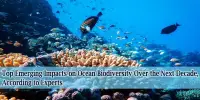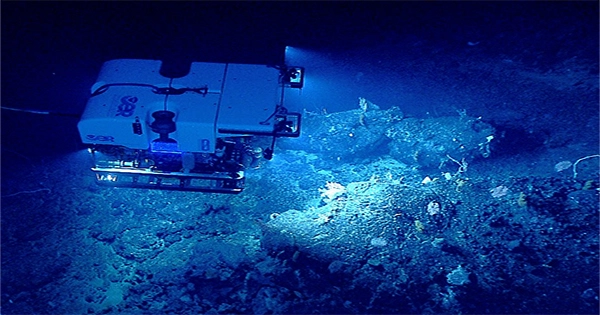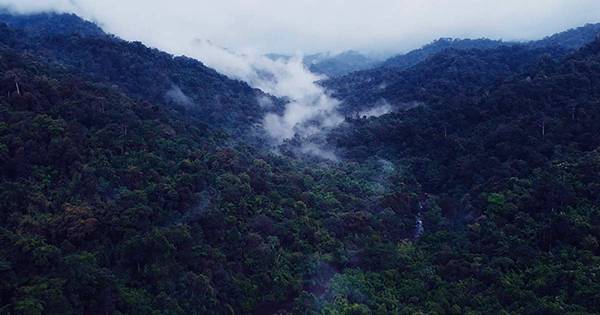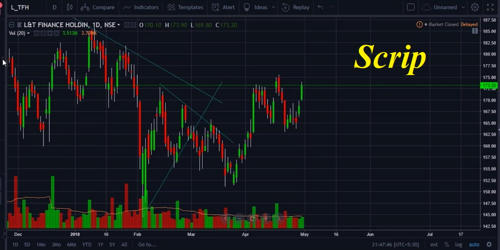The terrestrial ecosystem as well as the coastal and marine habitats gain from restoring and rewilding islands that have been devastated by invasive species.
In addition to providing a microcosm for the unmet potential of ecosystem restoration on a global scale, linking land and sea through coordinated conservation efforts may bring unrealized and amplified advantages for biodiversity, human well-being, climate resilience, and ocean health. Instead of focusing on isolated issues, this new era of conservation emphasizes how all ecosystems are interconnected.
An innovative viewpoint entitled “Harnessing island-ocean connections to maximize marine benefits of island conservation” was published today, December 5, in the Proceedings of the National Academy of Sciences (PNAS). It acknowledges the crucial relationship between island and marine ecosystems and identifies island and near-shore marine environmental traits that support strong linkages in these ecosystems around the world.
In order to leverage the strength of island-ocean connections that support ocean health, the outcome serves as a model for effective land-sea conservation and management decisions by governments, foundations, Indigenous peoples, local communities, NGOs, and conservationists.
“By applying this knowledge to islands worldwide, we can understand the marine benefits of island restoration projects and maximize returns for our conservation management investments for people, wildlife, and the planet,” said Stuart A. Sandin, PhD., lead author of the perspective and a marine ecologist at Scripps Institution of Oceanography at the University of California San Diego.
With a disproportionate number of rare plants, animals, communities, and cultural traditions that are unique to islands, they support some of the most precious ecosystems on Earth. Nutrients must travel from oceans to islands and from islands to oceans in order for land-sea ecosystems to be healthy. “Connector species,” such seabirds, seals, and land crabs, support this process.
According to research, islands with high seabird populations, for instance, have larger fish populations, faster-growing coral reefs, and higher rates of coral recovery from climate change impacts because these birds feed in the open ocean and deposit large amounts of nutrients into island ecosystems through their guano.
This research is incredibly useful for prioritizing where to focus conservation work and precious resources to have the greatest impact. By restoring and rewilding Floreana Island, we now know that we will also be restoring and protecting wildlife in the Marine Protected Area surrounding the island and beyond, and providing climate resilience. This is critical to building a sustainable Floreana for local islanders and a healthier planet for all life on Earth.
Wes Sechrest
However, invasive non-native mammals like rats that prey on bird eggs and young hatchlings on islands where they nest have pushed several seabird species to local or global extinction or near-extinction.
Ecosystem collapse, both on land and in the water, is frequently caused by the loss of these connector species populations. One of our most effective instruments for reestablishing native plants, animals, and ecosystems is the removal of alien species from islands.
“Islands and oceans are connected-something many people living along coasts have long understood, depended on and managed holistically as a result,” said Penny Becker, PhD., a coauthor on the perspective and vice president of conservation for the nonprofit Island Conservation.
“Linking efforts on land, including removing invasive species from islands, with marine restoration and protection offers a significant untapped opportunity to protect and restore both islands and coastal regions.”
The conclusions drawn through the authorship collaboration of scientists, non-profit environmentalists, government agency representatives, and others may assist determine where island restoration could have the most marine co-benefits. They identify six key environmental factors precipitation, elevation, vegetation cover, soil hydrology, oceanographic productivity, and wave energy that might help determine which island-ocean restoration projects should be prioritized.
The study identifies islands like Floreana Island in Ecuador’s Galapagos Archipelago as having a high potential to produce significant marine co-benefits following the removal of invasive species and island rewilding. This island has higher rainfall, lower wave energy, and other conditions consistent with high land-sea connectivity.
“This research is incredibly useful for prioritizing where to focus conservation work and precious resources to have the greatest impact,” said Wes Sechrest, Ph.D., co-author and chief scientist and CEO for the nonprofit Re:wild.
“By restoring and rewilding Floreana Island, we now know that we will also be restoring and protecting wildlife in the Marine Protected Area surrounding the island and beyond, and providing climate resilience. This is critical to building a sustainable Floreana for local islanders and a healthier planet for all life on Earth.”
Residents of Floreana have been directly affected by the harmful consequences of invasive species for many years, and they are influencing the future of their island by becoming instrumental in its rehabilitation.
Sonsorol Island, Palau is another site with high land-sea connectivity potential. Due to the decline in seabird populations brought on by invasive species, nutrient deposition has slowed dramatically, which is decreasing the productivity of the reefs in the area.
Due to Sonsorol Island’s isolation, the native population is primarily reliant on the resources found nearby. Prior to the effects of invasive species, people on Sonsorol Island coexisted peacefully with their surroundings and made the most of the resources the land and the sea had to offer.
“Sonsorol and Floreana Island are just two of the many islands that hold great potential for healing marine environments,” said Kate Brown, executive director of the Global Island Partnership and co-author. “Prioritizing island restoration across the globe can have a significant benefit for our world’s biodiversity, both on land and in the sea. Together, we can build resilient island communities supported by healthy island and marine ecosystems teeming with biodiversity.”
The Island-Ocean Connection Challenge, an ambitious new environmental initiative that intends to restore and rewild at least 40 globally significant island ecosystems for the benefit of islands, oceans, and communities by 2030, includes the Sonsorol and Floreana island restoration projects.
Founding partners, Island Conservation, Re:wild and Scripps Institution of Oceanography launched the Island-Ocean Connection Challenge in April 2022 at the Our Ocean conference in Palau with the Republics of Panama, and Palau with supporters including the David & Lucile Packard Foundation, Oceankind, Cookson Adventures, the Leo Model Foundation, North Equity Foundation, and the Sheth Sangreal Foundation.
Since then, the campaign has welcomed new partners and supporters, including the government of Chile, Danny Faure Foundation, the government of the Dominican Republic, the government of Ecuador, the Global Island Partnership, Marisla Foundation and the Oceans Finance Company.
















